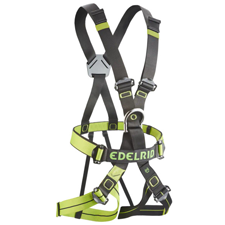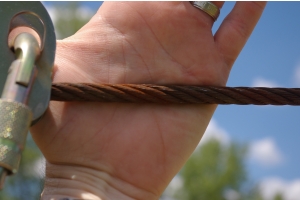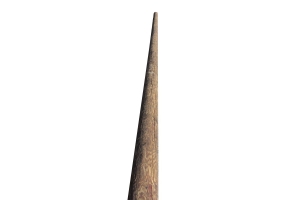How to Select a Ropes Course Harness or Zip Line Harness

A ropes course and/or zip line harness is one of the most important pieces of gear for an oporator to purchase. It is essential for your staff and participant safety when on a challenge course or zipline, and it can make a big difference intheir comfortand teh overall expericece. There are many different factors to consider when choosing a harness, so it is important to do your research and find the one that is right for you.
Style
Ropes course and zip line harnesses come in a variety of styles: Sit harnesses, sit harnesses with chest harnesses, full body harenesses and specialty harnesses for accessability or being suspended in a prone or superman position. Its imprtant to select a harness that prevents inversion whil eengaging in the activity. While ist common to wear sit harnesses while rock climbing and on some challneg course elements, best practice would be to use a sit harness with a chest harness or better yeat a full body harness.
Materials
Harnesses are made from a variety of materials, including nylon, polyester, and Dyneema. Each material has its own advantages and disadvantages. Nylon is strong and durable, but it can be heavy. Polyester is lighter than nylon, but it is not as strong. Dyneema is the lightest and strongest material, but it is also the most expensive.
Types of Buckles
There are two main types of buckles used in ropes course and zip line harnesses: two-piece buckles and four-piece buckles. Two-piece buckles are the most common type of buckle. They are easy to use and they are relatively secure. Four-piece buckles are more secure than two-piece buckles, but they are also more difficult to use.
Gear loops
Harnesses have a variety of gear loops for holstering equipment. The number and size of gear loops will vary depending on the type of harness. Make sure that the harness has enough gear loops for the gear that you plan to carry. Typcially staff harnesses will require gear loops and participant harnesses dont require any (although some challenge courses and aerial adventure parks may use lanyards and trolleys thatget temporarily connected to a participants gear loops). gear loops while handy, are not rated for fall protection and must never be used to connect people to belay cables, trees, tc. in any capacity.
Pre-use inspection
It is important to inspect all ropes course harnesses before each use. Check for any tears, fraying, or other damage. If you find any damage, do not use the harness. Replace it immediately.
Here are some additional tips for selecting a ropes course or zip line harness:
- If for staff use the harness must be a full body harness compatible with ANSI z359 or compatible CE or EN standard. Combination sit and chest harnesses used togerther typically do not meet the OSHA or TSSA standards in North America for staff use on challenge courses.
- For use on a climbng tower or activities where inversion is unlickly to occur sit harnesses, sit harnesses with chest harness, or full body hareses are acceptable.
- For zip lines or any ropes course activity where inversion is possible a full body harness that meets UIAA standardss or better is reccomended.
By following these tips, you can select a ropes course and zip line harness that is safe and comfortable for your guests and staff, and effective and compatable with other equipment and challenge course program operations and policies.








